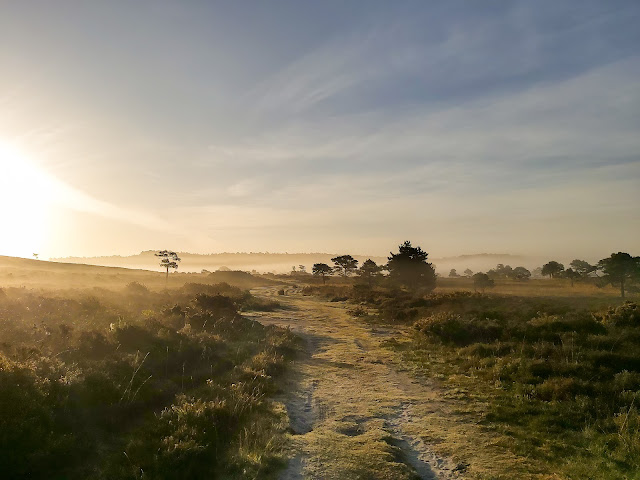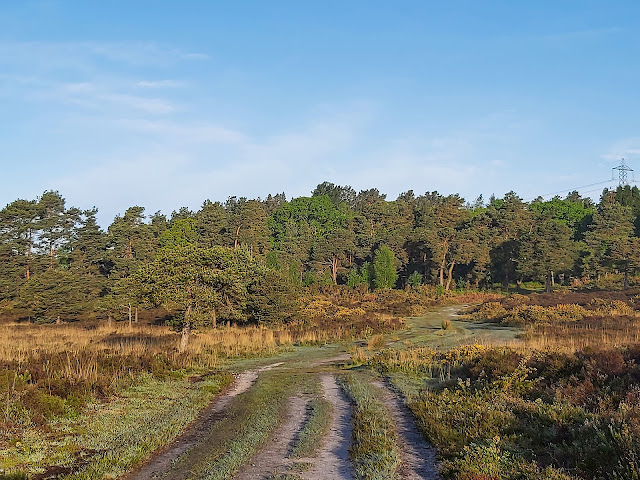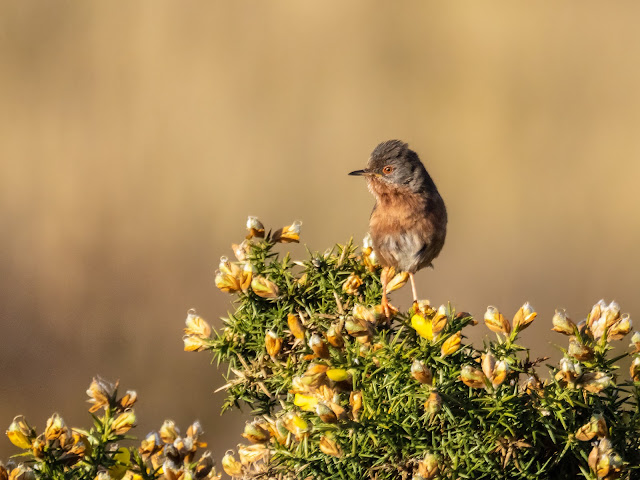On 12th May 2022, I visited the following sites:
Wareham Forest near Wareham
Knepp Wildland near Horsham
After my late evening visit to the Great Ovens area of Wareham Forest the evening before, I visited another area in Wareham Forest this morning, namely Morden Bog NNR.
Morden Bog is a National Nature Reserve (NNR) comprising one of the largest valley bog and mire habitats in England, together with extensive lowland heath. In addition to its NNR status, the majority is also designated as a Site of Special Scientific Interest (SSI), a Special Area of Conservation (SAC), a Special Protection Area (SPA) and a Ramsar site.
I arrived at 5:30 a.m. on a stunning morning which showed the beautiful mosaic of habitats at their best and encouraged an abundance of bird song.
The highlights, amongst 32 species recorded during my visit, were as follows (heard only records in italics): Dartford Warbler (6 males, 1 pair and 2 other singing males heard), Cuckoo (2 calling males and 1 other calling male heard), Tree Pipit (2 singing males and 3 other singing males heard), Garden Warbler (1 singing male), Chiffchaff (1 singing male and 5 other singing males heard), Blackcap (1 singing male), Stonechat (3 males, 3 females and 1 pair), Yellowhammer (1 singing male), Reed Bunting (1 male), Linnet (2), Skylark (2), Siskin (2), Goldcrest (5 singing males), Mistle Thrush (1 singing male), Mallard (5), Tufted Duck (5), Little Grebe (1), Brown Hare (1), Grey Squirrel (1)
Photo: Morden Bog, Wareham Forest
Photo: Dartford Warbler
Photo: Dartford Warbler
Photo: Dartford Warbler
Photo: Dartford Warbler
Photo: Dartford Warbler
Photo: Dartford Warbler
Photo: Dartford Warbler
Photo: Dartford Warbler
Photo: Dartford Warbler
Photo: Dartford Warbler
Photo: Dartford Warbler
Photo: Dartford Warbler
Photo: Dartford Warbler
Photo: male Stonechat
Photo: female Stonechat
Photo: Linnet
Photo: Tree Pipit
After spending several hours at Morden Bog, I drove 2.5 hours east to West Sussex and Knepp Wildland where I had booked to stay overnight.
Knepp Wildland is the first major lowland rewilding project in England. It comprises 3,500 acres or 5.4 square miles of former arable and dairy farmland in the grounds of Knepp Castle in West Sussex.
Knepp Wildland has gained international recognition for its pioneering approach to conservation since its inception and it is credited with inspiring the UK’s ‘‘rewilding’’ movement. I have written about ‘‘rewilding’’ here and I was really looking forward to my first visit to Knepp Wildland which had been delayed in 2020 and 2021 due to the Covid-19 pandemic.
The Knepp Wildland project began in 2001 when the owners of the 3500 acre estate, Charlie Burrell and his wife, the author Isabella Tree, conceded defeat in their long fight to make their farm profitable and, over the subsequent decade or so, turned their intensively farmed land into one of the most successful sites for biodiversity in the country.
The evolution of Knepp Wildland was detailed in the excellent book by Isabella Tree …. see here. I read the book and heard the author speak at the Rutland Water BirdFair in August 2018 and I chatted briefly with her at a book signing session afterwards.
After fencing separate blocks of the estate, the Burrell’s released English Longhorn cattle, Exmoor ponies, Tamworth pigs and Red and Fallow Deer to roam freely through these blocks and allowed them to graze, browse, trample and dung their way through the site as proxies for wild herbivores extinct or missing from the landscape. They then stepped back and let natural processes take over and this is partly what differentiates a rewilding approach from traditional management-driven conservation.
The result was an explosion in the abundance and diversity of wildlife, including many rare species. Knepp Wildland is now among the UK’s last outposts for rapidly declining species such as Turtle Doves and Nightingales.
More recently, Knepp Wildland has seen the first fledging of chicks of reintroduced White Storks in the UK since the 15th century .... see here and here. The White Stork Project announced in early April a record-breaking start to the breeding season for 2022 at Knepp Wildland with 37 eggs counted across 9 nests. This follows last year's success when 14 chicks successfully fledged from 6 nests. There have been some positive signs that things are on track for the team's target of 50 breeding pairs of White Storks by 2030 …. see here. On 13th May 2022, the White Stork Project confirmed that 6 of the 9 nests now have 23 chicks in total with a few more eggs due to hatch.
Knepp Wildland is also now home to the first Beavers living in the wild in Sussex for 400 years .... see here.
Additions to my 2022 year list: White Stork, Turtle Dove
At 3 p.m., I returned to my car and then checked in for the campsite. Parking next to the pitches in the camping field is not permitted so several journeys to and from the car are required although fortunately wheelbarrows are available to transport everything. This campsite was the busiest out of all those that I stayed at although it was quiet and there was plenty of space for everyone in the large camping field. It was also the most expensive at £23 per night.
Wildlife over and
around the campsite was amazing starting with 6 soaring White Storks at
around 4 p.m. followed by 2 singles and a pair later in the afternoon and early
evening plus a pair of soaring Sparrowhawks.
I was woken up at 3 a.m. by the song of 2 male Nightingales and in the following hour I also heard a calling male Tawny Owl, a calling male Cuckoo, a barking Red Fox and a barking Roe Deer, all then followed by the dawn chorus of many bird species and the “bill clapping” of a distant pair of White Storks.
Photo: Knepp campsite
Photo: Knepp campsite
💚🦆 🦉🦋🐝🦊🦡🌼 🌳💚
Stay safe, stay well, stay strong, stay connected with nature

























No comments:
Post a Comment
If you feel like commenting on my blog, you can contact me by completing the comment form below. I will respond to all comments and enquiries and constructive criticism will always be welcomed.